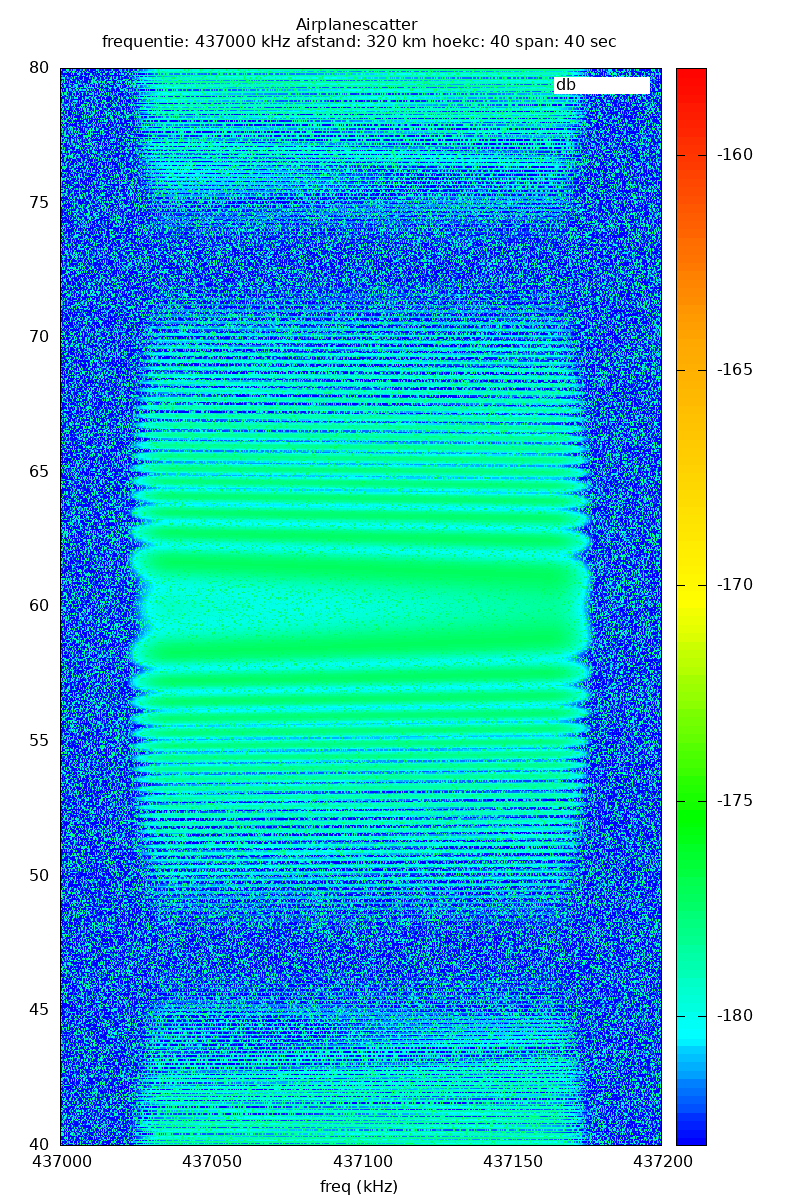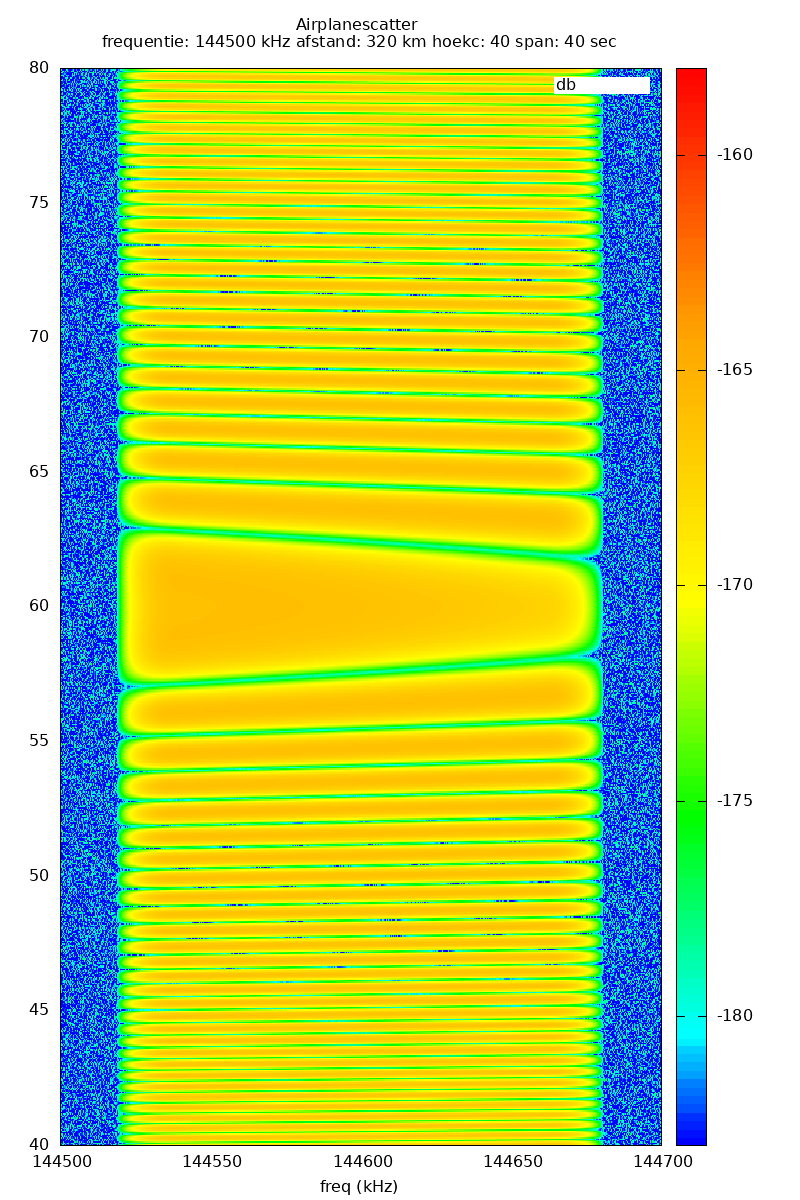DATV and Airplanescatter
(2022-11-08) PE1ITR
This page is still under construction.
Introduction
Most QSO's up to 700 to 800 km on VHF+ run via a Troposcatter and/or Aircraft Scatter radio propagation path. In most cases a combination of Troposcatter and Arircraft Scatter in which, depending on the situation at the moment, one of these paths dominates.
In long-range DATV, the signal is distorted by these propagation phenomena. DVB-S and DVB-S2 are not designed to handle these kind of distortion. It is therefore interesting to investigate how these relatively broadband signals arrive at the receiver in terrestrial communication.
In practice I have noticed that it is quite possible to listen to the DVB signal in SSB mode (in 3 kHz bandwidth). DATV broadcasts are continuous for extended periods of time. This allows you to properly observe the radio propagation effects. This makes it possible to hear the oscillation/flutter on the troposcatter signal. Also the effects of the aircraft scatter signal, especially when the Forward Scatter Enhandcement (FSE kicks in and the aircraft scatter propagation becomes dominant over the troposcatter. The signal then swells in strength as the simulation pictures also show.
Digital amateur television with reduced bandwidth is increasingly used in Amateur Television contests in which the distance in kilometers between the stations is part of the scoring. There is also interest in using the VHF bands for television. Using the VHF bands and increasing the distance is a great way to increase the total score in the contest. Aircraft scatter is the way to make a connection over a long distance on a band without special tropo propagation.
Simulations
I have made a program in software that shows the signal strength over a frequency range in time. Based on the parameters frequency, bandwidth, distance in kilometers between transmitter and receiver, and trajectory of the aircraft, an interference pattern is plotted in a picture. It is important for a DVB receiver that the signal is above the detection level for a few seconds. The pictures provide this information.
The strength of the Troposcatter signal is calculated according to the Yeh method. The strength of the aircraft scatter signal is highly dependent on the angle of incidence and loss of the aircraft. For this the calculation has been used as described by VK2KU and W3ZS[1].
Findings


Reference
[1]
[2] Radio Propagation by Tropospheric Scattering by KA1GT
HOME | Go Back

